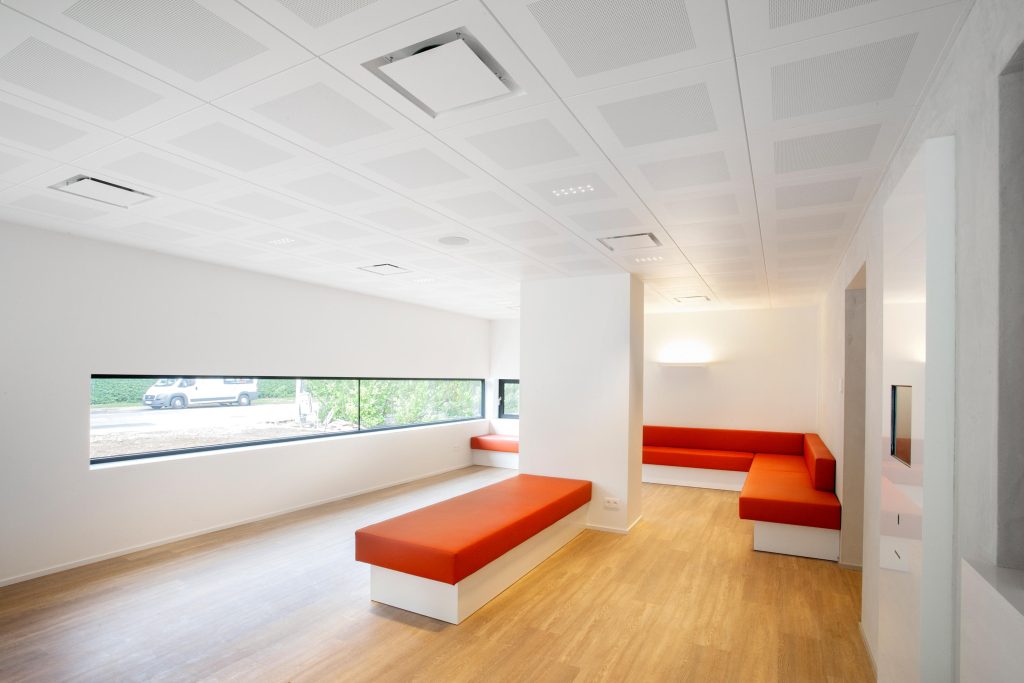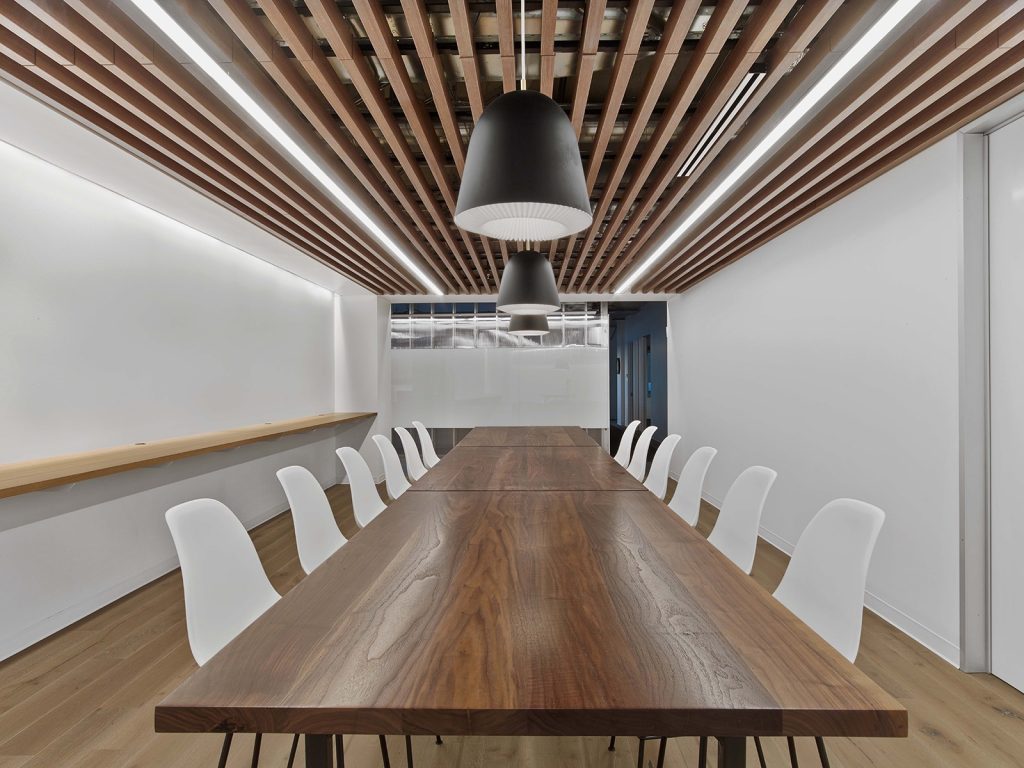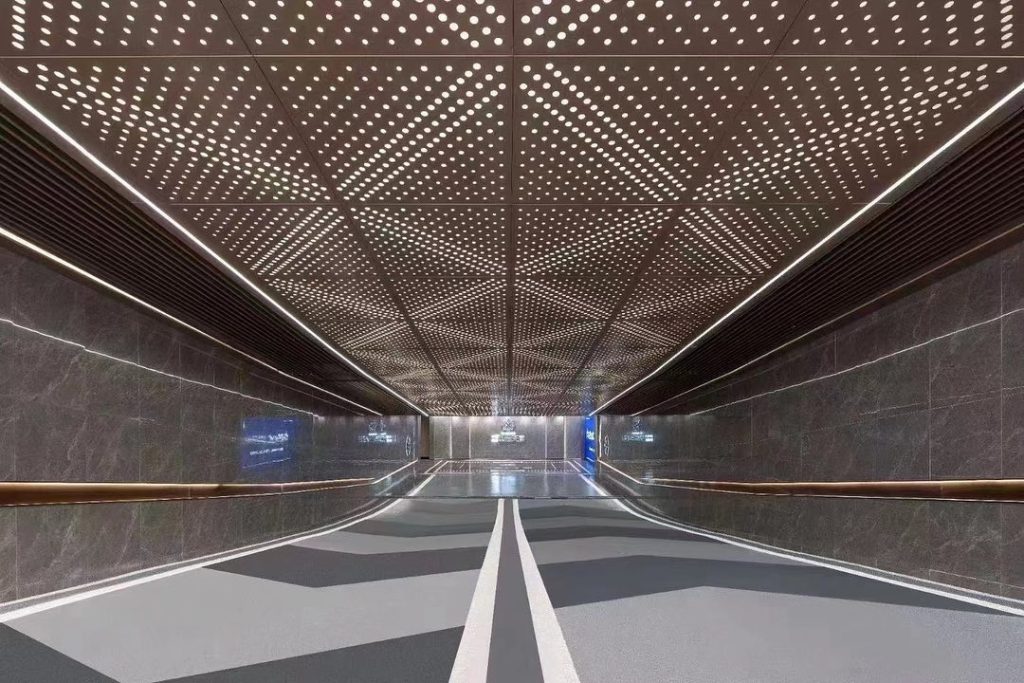If you’re looking for a way to update the look of your home or office, consider a modern ceiling panel. These panels are a great way to add a touch of sophistication and style to any room. Not only do they look great, but they also offer many practical benefits.

One of the biggest advantages of modern ceiling panels is that they can help to improve the acoustics of a room. Many panels are designed to absorb sound, which can be particularly useful in large spaces or in areas where noise is a problem. Additionally, modern ceiling panels are often made from eco-friendly materials, making them a great choice for those who are looking to reduce their environmental impact.
Another benefit of modern ceiling panels is that they are incredibly versatile. They come in a wide range of colors, styles, and materials, so you’re sure to find something that fits your aesthetic preferences. Whether you’re looking for a sleek and modern look or something a bit more traditional, there’s a ceiling panel out there that will work for you. So why not consider modern ceiling panels for your next home or office renovation project?
History of Modern Ceiling Panels

Modern ceiling panels have come a long way since the early days of ceiling decoration. They have evolved from simple plaster or wood designs to intricate and stylish panels made from various materials. Here is a brief history of modern ceiling panels.
Early 20th Century
In the early 20th century, tin ceilings were very popular in North America. They were an affordable option to emulate the look and elegance of ornate plasterwork that was popular in Europe at the time. Tin ceilings were primarily painted white to emulate the plaster ceilings in Europe, but more modern applications vary widely in the methods used to finish them. Today, tin ceilings are still popular, and they come in a variety of patterns and finishes.
Mid 20th Century
In the mid-20th century, acoustic tiles were introduced as a way to dampen sound in rooms. These tiles were made from mineral fiber and were available in a variety of colors and textures. Acoustic tiles were popular in commercial spaces such as offices and schools.
Late 20th Century
In the late 20th century, drywall became the standard for ceiling construction. It was cheap, easy to install, and could be painted to match any decor. However, drywall ceilings lacked the decorative appeal of earlier ceiling designs.
21st Century
In the 21st century, modern ceiling panels have become more sophisticated and stylish. They come in a variety of materials such as wood, metal, and PVC, and can be customized to fit any design aesthetic. Modern ceiling panels can be used to create a variety of effects, from a rustic, natural look to a sleek, modern design.
Overall, modern ceiling panels have come a long way since their early beginnings. With a variety of materials and styles to choose from, they are a versatile and stylish option for any home or commercial space.
Types of Modern Ceiling Panels

If you are looking for a way to update your home’s interior, modern ceiling panels are a great option. They come in a variety of styles and materials, and can be used to create a unique look that fits your personal taste. Here are three types of modern ceiling panels to consider:
Acoustic Ceiling Panels
Acoustic ceiling panels are designed to reduce noise in a room. They are often used in commercial spaces, but can also be a great addition to a residential home. These panels are made from materials that absorb sound, such as fiberglass or mineral wool. They come in a variety of colors and textures, so you can choose a style that matches your decor.
Decorative Ceiling Panels
Decorative ceiling panels are a great way to add visual interest to a room. They come in a variety of styles, from simple geometric patterns to intricate designs. These panels can be made from a variety of materials, such as wood, metal, or plastic. Some panels are designed to be painted or stained, while others come in a finished color or texture.
Integrated Lighting Ceiling Panels
Integrated lighting ceiling panels are a great way to add both style and functionality to a room. These panels are designed to incorporate lighting fixtures, such as recessed lights or LED strips. They can be made from a variety of materials, such as acrylic or polycarbonate. Integrated lighting ceiling panels are a great way to create a modern look in a room, while also providing ample lighting.
Overall, modern ceiling panels are a great way to update the look of your home’s interior. Whether you choose acoustic panels, decorative panels, or integrated lighting panels, there is a style that will fit your personal taste and needs.
Materials and Composition
When it comes to modern ceiling panels, there are several materials to choose from. Each material has its own unique properties, advantages, and disadvantages. Here are some of the most common materials used in modern ceiling panels:
Fiberglass
Fiberglass ceiling panels are made from tiny fibers of glass that are woven together to create a mat. The mat is then coated with resin to create a rigid panel. Fiberglass panels are lightweight, easy to install, and offer good sound absorption. They are also resistant to moisture, mold, and mildew, making them a good choice for areas with high humidity.
Mineral Fiber
Mineral fiber ceiling panels are made from a combination of mineral wool and starch. The panels are formed by compressing the fibers together under high pressure. Mineral fiber panels are known for their excellent sound absorption and fire resistance. They are also relatively inexpensive and come in a variety of textures and finishes.
PVC
PVC ceiling panels are made from a type of plastic called polyvinyl chloride. They are lightweight, easy to install, and come in a variety of colors and finishes. PVC panels are also resistant to moisture, mold, and mildew, making them a good choice for areas with high humidity. They are also easy to clean and maintain.
Metal
Metal ceiling panels are made from a variety of metals, including aluminum, steel, and copper. They are known for their durability and strength, making them a good choice for areas with high traffic or heavy use. Metal panels are also resistant to moisture, mold, and mildew, making them a good choice for areas with high humidity. They come in a variety of finishes, including brushed, polished, and matte.
Overall, each material has its own unique properties and advantages. When choosing a modern ceiling panel, it is important to consider the specific needs of your space, including sound absorption, fire resistance, durability, and moisture resistance.
Installation and Maintenance
When it comes to installing modern ceiling panels, you have two options: professional installation or DIY. If you are experienced with home improvement projects, you may be able to install the panels yourself. However, if you are not confident in your abilities, it is best to hire a professional to ensure the job is done correctly. Professional installation can also save you time and effort, as the experts will have the necessary tools and experience to complete the job efficiently.
Professional vs. DIY Installation
If you decide to install the panels yourself, it is important to follow the manufacturer’s instructions carefully. Make sure you have all the necessary tools and materials before you begin. It is also a good idea to have a helper to assist you with the installation. If you are unsure about any aspect of the installation process, do not hesitate to seek advice from a professional.
On the other hand, professional installation can be more expensive, but it ensures that the job is done right the first time. Professionals have the skills and experience to handle any issues that may arise during the installation process. They can also recommend the best materials and designs for your specific needs.
Cleaning and Care
To keep your modern ceiling panels looking their best, it is important to clean and care for them regularly. Use a soft cloth or sponge to wipe down the panels, and avoid using abrasive cleaners or harsh chemicals. If you need to remove stains or marks, use a mild soap and water solution.
It is also important to avoid excessive moisture, as this can cause damage to the panels. If you notice any signs of water damage or mold, contact a professional immediately to assess the situation.
Replacement and Longevity
Modern ceiling panels are designed to last for many years with proper care and maintenance. However, over time, they may become damaged or worn. If this occurs, it is important to replace the damaged panels as soon as possible to prevent further damage and maintain the overall appearance of your ceiling.
When replacing ceiling panels, make sure to choose panels that match the style and design of your existing ceiling. It is also important to follow the manufacturer’s instructions carefully to ensure a proper fit and installation.
In summary, whether you choose professional or DIY installation, it is important to follow the manufacturer’s instructions carefully and to clean and care for your modern ceiling panels regularly. With proper maintenance, your ceiling panels can last for many years, providing a beautiful and functional addition to your home or office.
Design and Aesthetics
When it comes to modern ceiling panel design, there are several factors to consider. This section will discuss the color and texture variations, architectural compatibility, and trends in modern ceiling design.
Color and Texture Variations
Modern ceiling panels come in a wide range of colors and textures, allowing you to customize the look of your space. From sleek and glossy finishes to more textured and natural materials, there are options to suit any design aesthetic. Some popular choices include wood, metal, and gypsum.
When choosing a color and texture for your ceiling panel, it’s important to consider the overall design scheme of your space. You may want to choose a panel that complements your flooring or wall color, or you may want to create a bold statement with a contrasting color or texture.
Architectural Compatibility
Another important consideration when choosing a modern ceiling panel is architectural compatibility. Your ceiling panel should complement the overall architectural style of your space. For example, if you have a modern, minimalist design scheme, you may want to choose a panel with clean lines and a simple finish. On the other hand, if you have a more traditional space, you may want to choose a panel with more ornate details.
Trends in Modern Ceiling Design
Finally, it’s important to consider current trends in modern ceiling design. Some popular trends include the use of sustainable materials, such as bamboo or recycled wood, as well as the use of bold colors and textures. Additionally, some designers are incorporating lighting into their ceiling panel designs, creating a seamless and functional look.
Overall, when choosing a modern ceiling panel, it’s important to consider your design aesthetic, architectural style, and current design trends. With so many options available, you’re sure to find a panel that suits your needs and enhances the overall look of your space.
